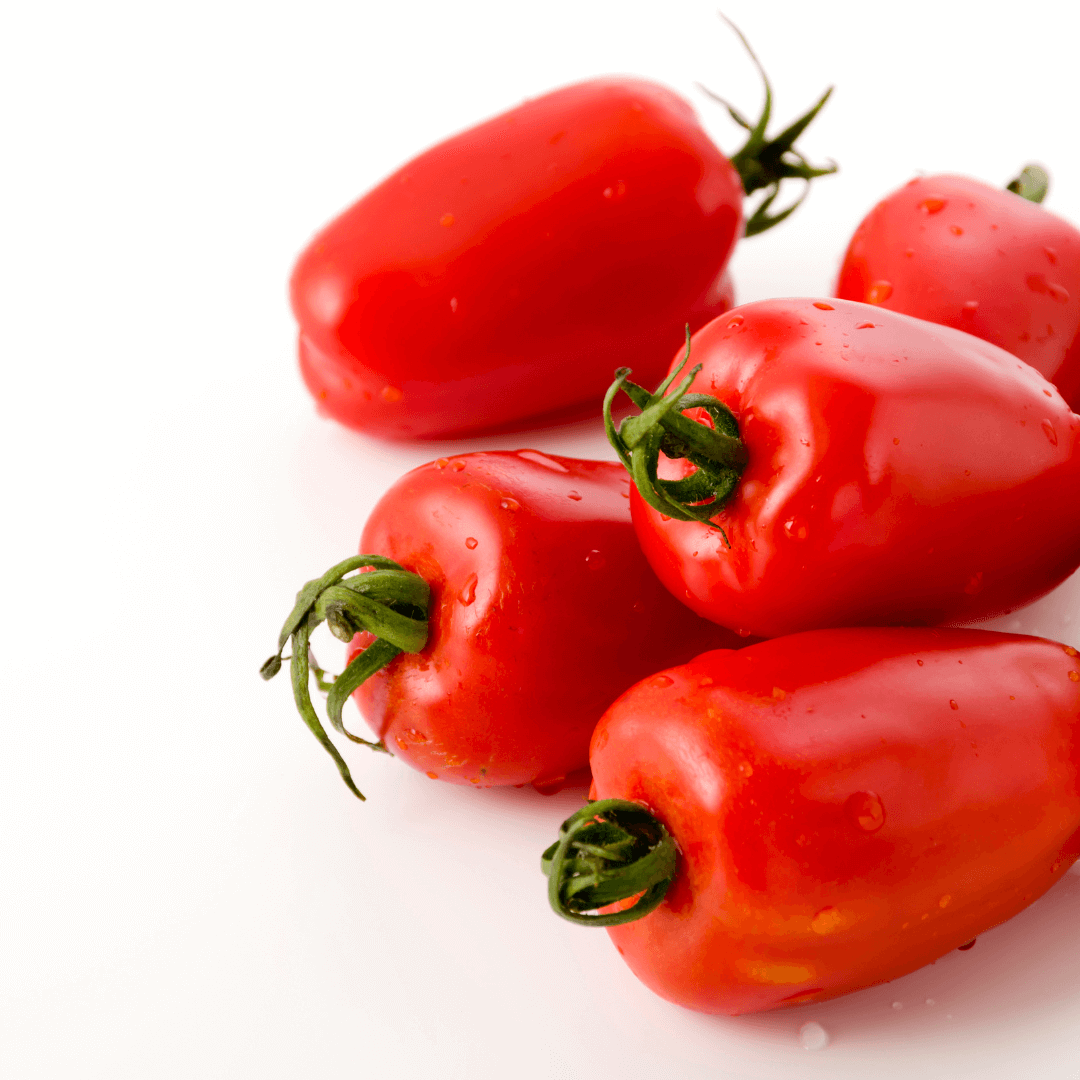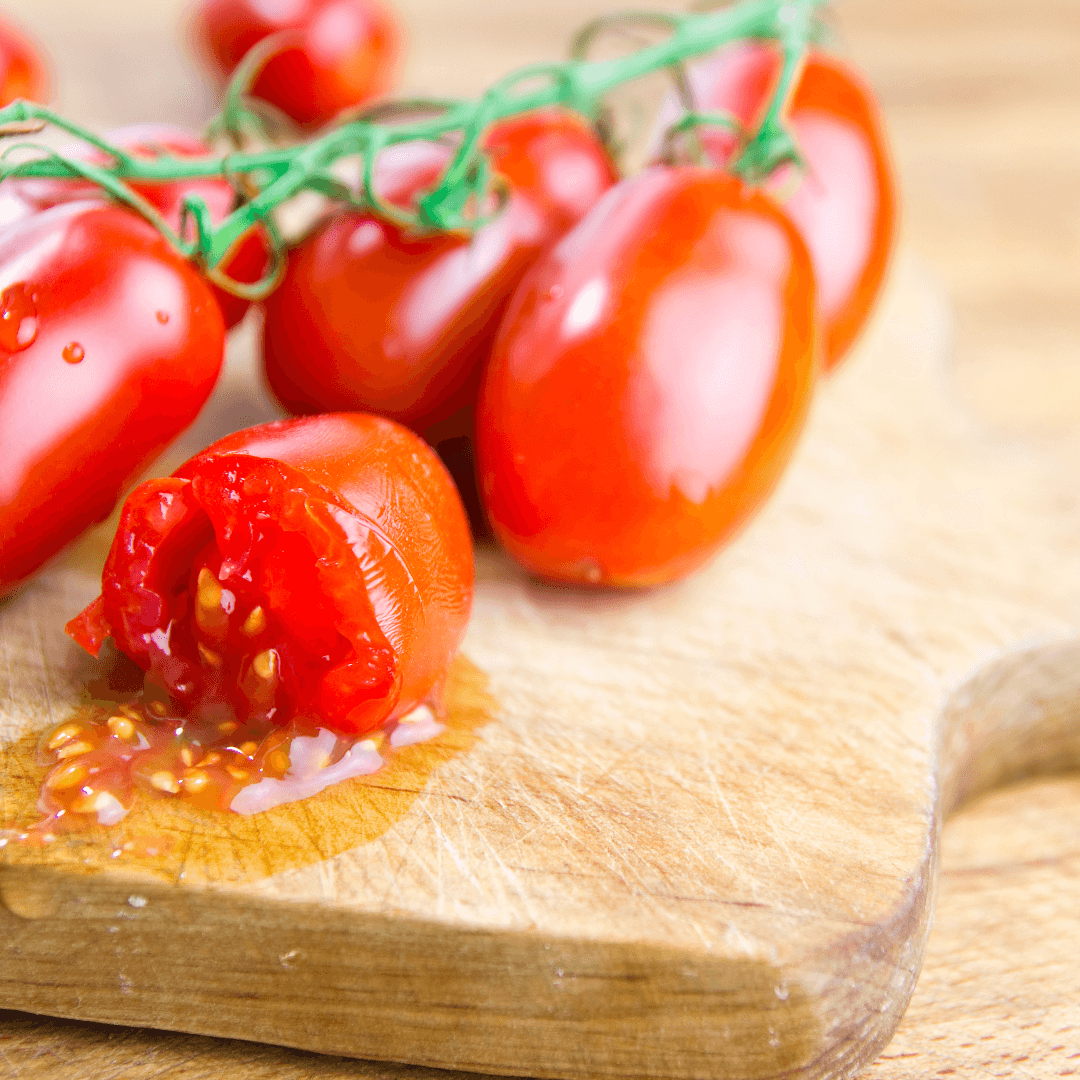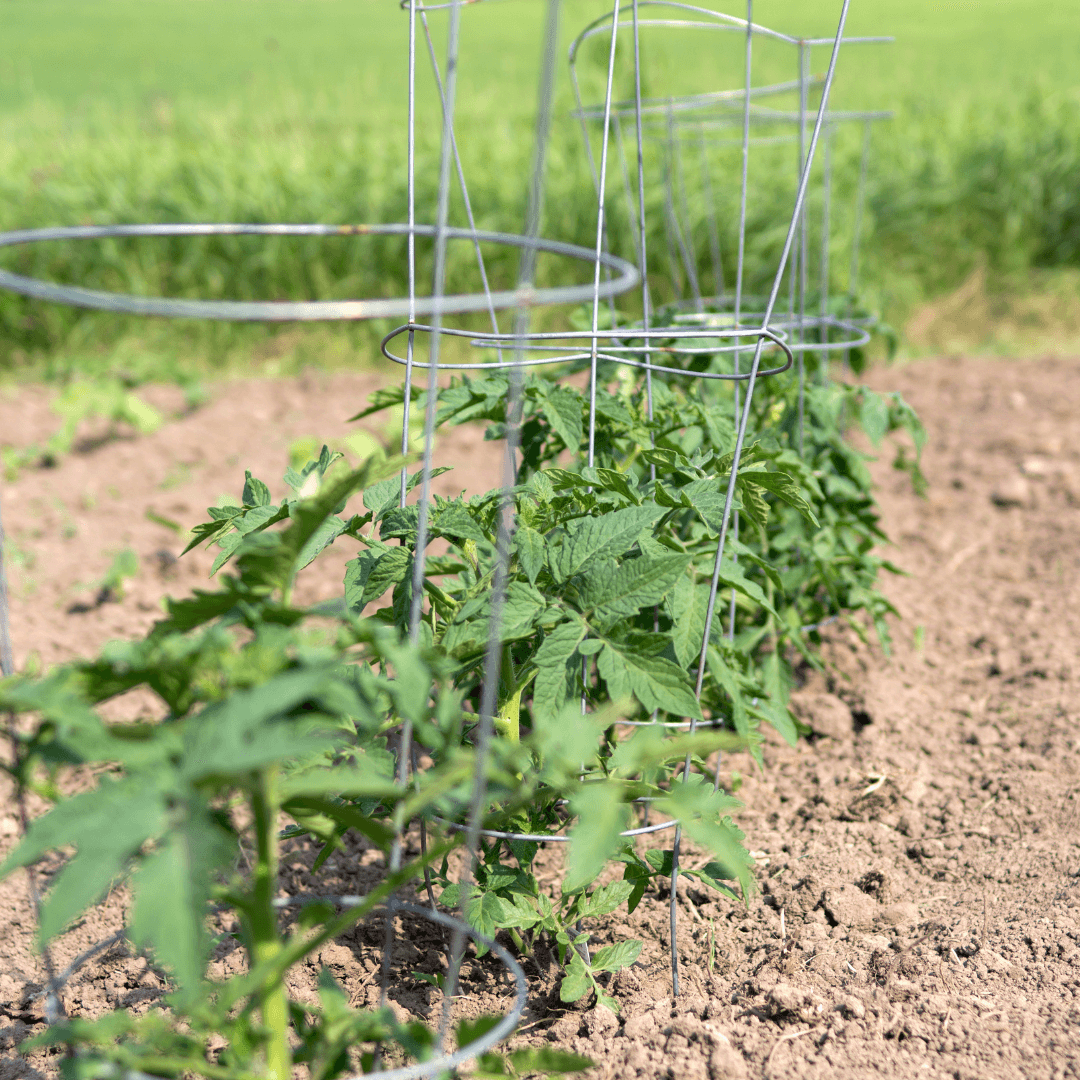As a passionate gardener, I'm thrilled to delve deeper into the world of San Marzano tomatoes and how their growing requirements compare to other popular tomato varieties. We'll focus on the factors that make San Marzano tomatoes easier or more challenging to grow so that you can decide if they are the right choice for your garden. These are the most popular tomato seeds we sell in our shop, and we often get asked are San Marzano tomatoes harder to grow? So let's take a look.
1. Climate and Growing Season
San Marzano tomatoes typically require a longer growing season, around 80 days, compared to other tomato varieties like Roma tomatoes, which can mature in just 75 days. This extended growing season means they might be slightly more challenging to grow in colder climates with shorter summers. However, this difference becomes negligible if you have a longer growing season in your region.
Best San Marzano Tomato Seeds For Sale
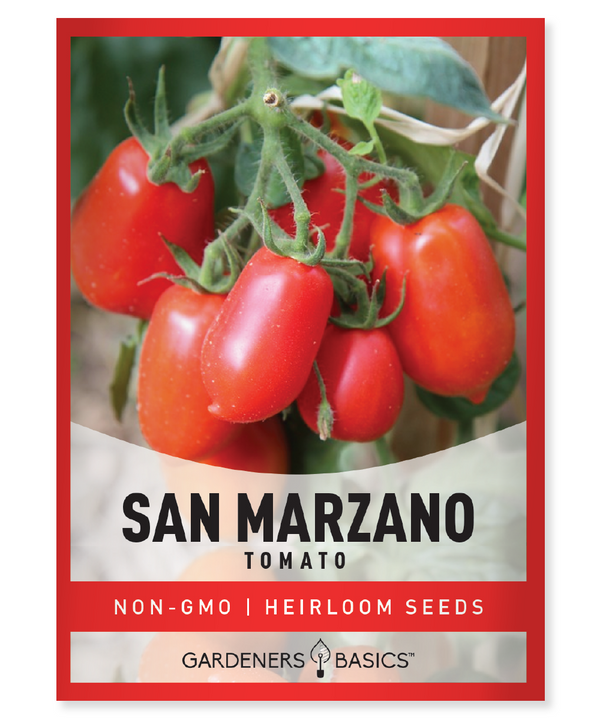
$2.49
Grow Authentic Heirloom San Marzano Tomatoes – Easy to Grow Non-GMO Seeds Our San Marzano Tomato Seeds are the perfect choice for any home gardener looking to grow authentic, high-quality tomatoes. These heirloom, non-GMO, non-hybrid, open-pollinated seeds produce the renowned San… read more
Adapting to Different Climates
Gardeners in colder climates can still grow San Marzano tomatoes by starting the seeds indoors earlier or using season extenders like cold frames or row covers. These strategies can help provide the additional time needed for San Marzano tomato seeds to mature before colder weather sets in.
Importance of Consistent Temperature
Like other tomatoes, San Marzano tomatoes grow best when the temperature remains consistently between 70-85°F (21-29°C) during the day and 60-70°F (16-21°C) at night. Large fluctuations in temperature can stress the plants and result in decreased fruit production or quality. Thus, monitoring and maintaining ideal temperatures for successful growth is essential, regardless of the tomato variety.
2. Disease Resistance
Some tomato varieties are bred to resist common diseases, such as fusarium wilt and verticillium wilt. While San Marzano tomatoes are not explicitly bred for disease resistance, they are not known to be particularly susceptible either. Therefore, their disease resistance can be considered average compared to other tomato varieties.
Preventative Measures
To minimize the risk of diseases, practice crop rotation and avoid planting tomatoes in the exact location for consecutive years. Additionally, maintaining proper spacing, providing adequate airflow, and watering at the base of the plant can help prevent the spread of fungal diseases.
3. Growth Habit
San Marzano tomatoes are indeterminate tomato plants, which means they continue to grow and produce fruit throughout the growing season until killed by frost. This growth habit resembles many other tomatoes, including cherry and beefsteak tomatoes. However, some varieties, like Roma tomatoes, are determinate and only produce fruit for a limited time. If you prefer a continuous harvest, San Marzano tomatoes may be easier to grow than determinate varieties.
Pruning and Training
To maintain a healthy and productive San Marzano tomato plant, it's essential to prune and train the plant regularly. Removing suckers (side shoots) and maintaining one or two main stems helps increase airflow and improve fruit production. This practice is also common for other indeterminate tomato varieties.
4. Plant Size and Support
San Marzano plants can grow up to 6 feet tall, similar to other indeterminate tomato varieties. Due to their height, they require support, such as tomato cages or stakes. This is a common requirement among tomato plants, and it doesn't make San Marzano tomatoes more difficult to grow than other tall tomato varieties.
Choosing the Right Support
When selecting the right support for your San Marzano tomato plants, consider the size of your garden and the weight of the fruit. Sturdy tomato cages or trellises can provide adequate support and make it easier to harvest the fruit. Ensuring proper support for your tomato plants, regardless of the variety, is essential.
Tomato Seed Assortment | 8 Variety Pack
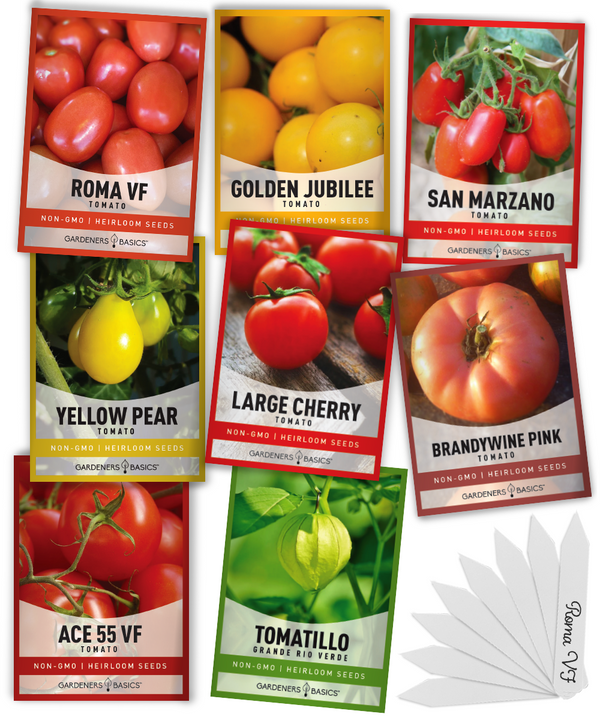
$15.95
8 Tomato Seeds Variety Pack – Heirloom, Non-Hybrid, Open-Pollinated, Non-GMO – Perfect for Home Gardens! Unlock the secrets to a thriving tomato garden with our premium 8 Tomato Seeds Variety Pack! Carefully curated for tomato lovers and gardening enthusiasts alike, this… read more
5. Fruit Characteristics
The oblong shape and firm texture of San Marzano tomatoes make them less prone to cracking and splitting compared to some other tomato varieties. This attribute can make them easier to grow, as you may encounter fewer issues with fruit damage.
Fruit Size and Ripening
San Marzano tomatoes have a medium size, making them easier to manage than larger beefsteak varieties, which may require additional support due to their weight. San Marzano tomatoes also tend to ripen uniformly, allowing for more predictable harvests than some heirloom varieties with varying ripening times.
Skin Thickness
San Marzano tomatoes have a relatively thick skin, which can be an advantage regarding pest resistance. Thicker-skinned tomatoes are less susceptible to damage from pests like hornworms and fruit worms, reducing the need for intervention to protect the fruit.
6. Yield
San Marzano tomatoes are known for their high-yielding plants. They produce abundant fruit, which can be a significant advantage over some other tomato varieties. This factor makes them attractive for gardeners looking to maximize their harvest.
Consistent Production
Due to their indeterminate growth habit, San Marzano tomatoes produce fruit consistently throughout the growing season. This continuous production can result in higher overall yields compared to determinate varieties with a finite production period.
Harvesting and Storage
When harvesting San Marzano tomatoes, picking the fruit when it reaches its peak ripeness is essential for the best flavor and texture. The tomatoes can be stored at room temperature or canned, dried, or frozen for longer-term storage. Proper harvesting and storage techniques apply to all tomato varieties, ensuring you can enjoy the fruits of your labor for an extended time.
7. Cultivation Requirements
San Marzano tomatoes have similar cultivation requirements as other tomato varieties. They need well-draining soil, a pH of 6.0-6.5, and at least 6-8 hours of direct sunlight daily. These requirements are common among tomato plants, and San Marzano tomatoes are not more difficult to grow based on these factors. If these requirements are not met, it can cause tomatoes to drop fruit.
Fertilization
Like other tomatoes, San Marzano tomatoes benefit from regular fertilization throughout the growing season. A balanced fertilizer designed explicitly for tomatoes can help ensure healthy growth and optimal fruit production. It's essential to follow the recommended application rates and timing for the fertilizer to avoid over-fertilizing, which can lead to excessive foliage growth at the expense of fruit production.
Watering
Proper watering is crucial for all tomato varieties, including San Marzano tomatoes. Tomatoes require consistent moisture to prevent issues like blossom end rot and fruit cracking. Deep, infrequent watering encourages deep root growth and improves drought tolerance. Using mulch around the base of the plants can help retain moisture and suppress weeds.
8. Flavor and Culinary Use
The sweet flavor and low acidity of San Marzano tomatoes make them highly desirable for cooking, especially in sauces. While this factor doesn't directly impact their growing difficulty, it might influence your decision to grow them compared to other tomato varieties based on your culinary preferences.
Versatility in the Kitchen
San Marzano tomatoes are versatile in the kitchen, making them an excellent choice for gardeners who enjoy cooking with homegrown produce. In addition to sauces, San Marzano tomatoes can be used in salads, soups, stews, and even oven-roasted as a flavorful side dish.
Conclusion
In conclusion, San Marzano tomatoes are not significantly more challenging to grow than other tomato varieties. They share many common requirements with other tomatoes, and their high yield and fruit quality make them a popular choice among gardeners. While their longer growing season might pose a slight challenge in colder climates, the other factors we've discussed indicate that San Marzano tomatoes are generally on par with other tomato varieties in terms of growing difficulty. Their delicious flavor, versatility in the kitchen, and high yield make them a rewarding choice for many gardeners.
By understanding the unique characteristics and cultivation requirements of San Marzano tomatoes, you can successfully grow these sought-after plum tomatoes in your garden. Remember to consider climate, disease resistance, growth habit, plant size, fruit characteristics, yield, and flavor when choosing the right tomato variety for your garden.
With proper care and attention to detail, growing San Marzano tomatoes can be a rewarding experience that yields a bountiful harvest of delicious and versatile fruit. Whether you are a seasoned gardener or a beginner looking to try growing tomatoes, San Marzano Tomatoes offer an opportunity to enjoy the satisfaction of homegrown produce and expand your gardening skills.





